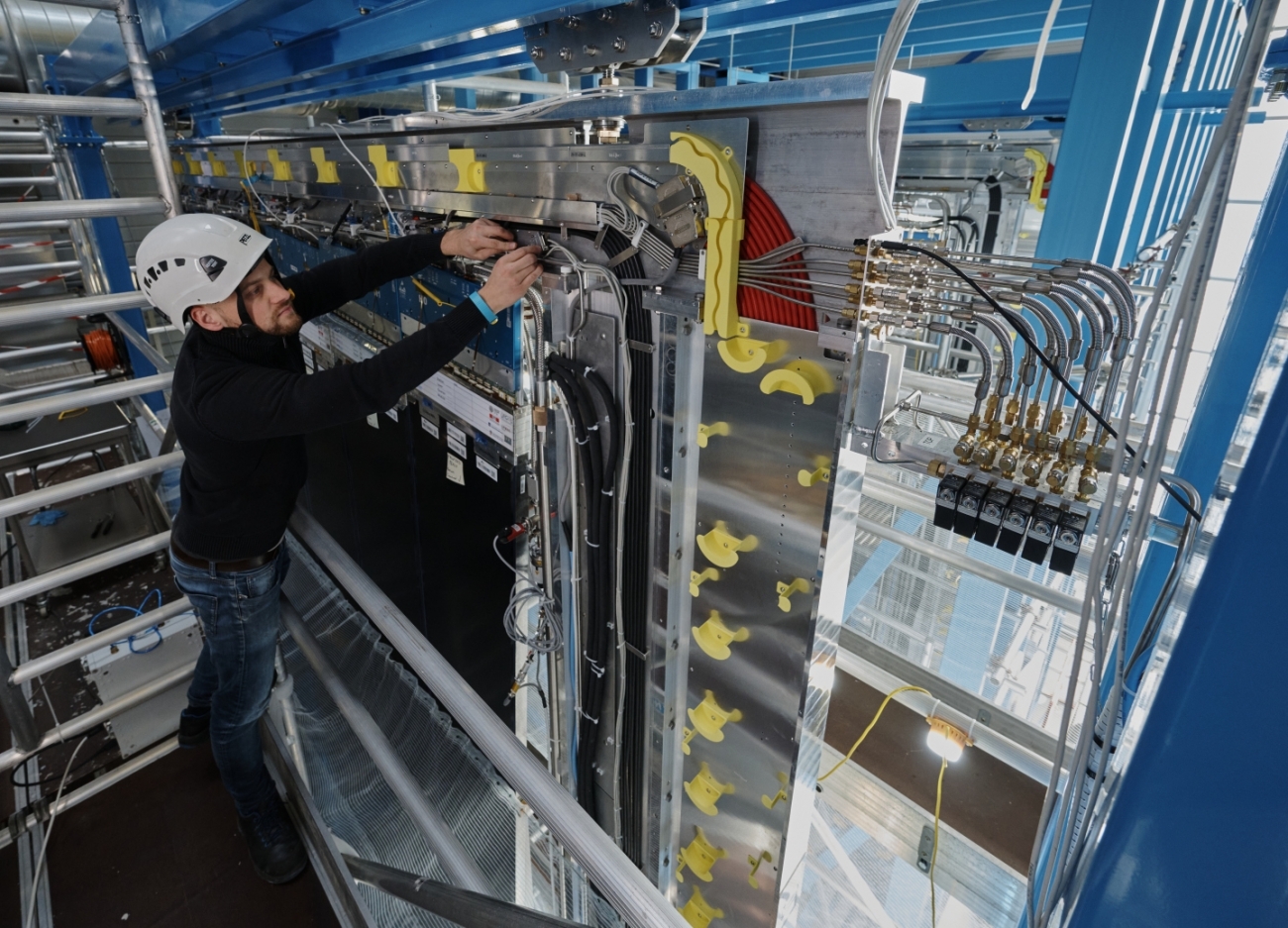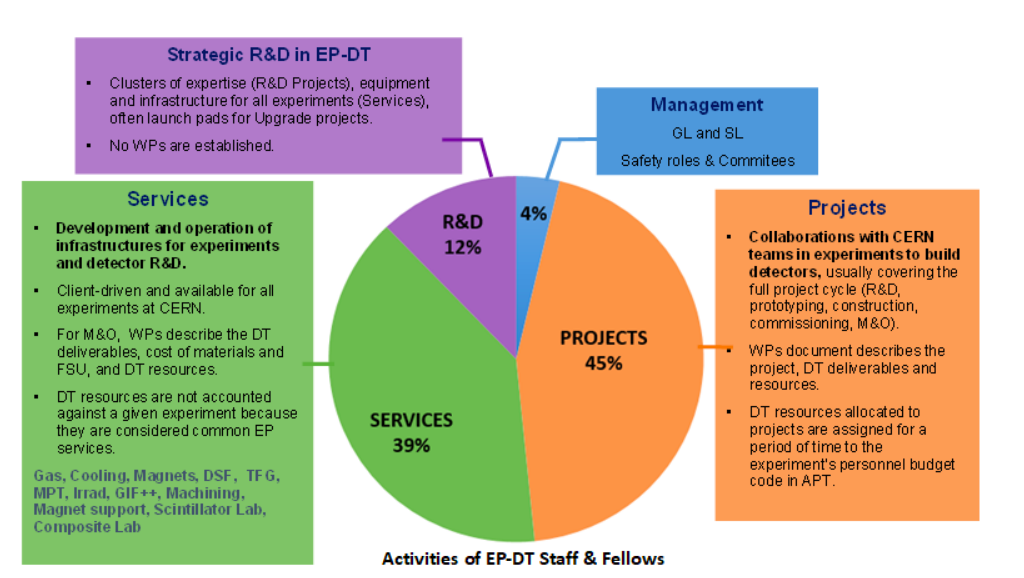DT group publishes 2020 annual report

Last week, CERN's EP-DT group published their annual report for 2020; a detailed accound of the group activities at CERN conducted over the year in collaboration with the LHC and non-LHC experimental groups along with their academic and industrial partners worldwide.
These activities are part of the group's mandate to participate in the development, operation and maintenance of detectors for present and future experiments at CERN. Over the years, the group has extended its participation in a wide range of activities bringing additional value to the obtained results. “It is a great challenge to cope with a growing number of requests for technical and engineering support for detector and R&D projects with a team not increasing in size.” says Burkhard Schmidt who is leading the EP-DT group. To cope with the incease number of requests, the group has a size of about 200 people, including about 85 staff members, 40 Fellows, 30 Students, 40 FSUs and about 10 Trainees who typically spend a 3-9months period at CERN during which they gain valuable experience and skills.
The DT group offers sophisticated services for developing and operating the required infrastructures for experiments, such as gas- cooling- and magnet control- and safety- systems. Secondly, DT is heavily involved on R&D in new detector technologies of common interest for the particle physics community, including micro-pattern gas detectors, radiation tolerant silicon detectors and CMOS pixel detectors. Finally, DT group joints forces with other teams concerning the upgrade of existing experiments or design for future detectors that would meet the ambitious goals outlined in the update of European Strategy for Particle Physics. The distribution of activities is shown in the following image.

The threefold mandate of the group is also reflected in its structure optimized to support the LHC experiments in two fronts: the finalization of the construction and installation of the LHC Phase I upgrade projects and the prototyping and construction of LHC Phase II upgrades.
During the pandemic, the group also had significant contributions to the "CERN-Against-Covid19" initiative. One of the projects kicked-off by a hanful of EP-DT members was the production of face shields. Thanks to the contribution of other groups and departments, DT delivered 15.000 face shields desgned to limit the risk of contamination from liquid projects. Moreover, the previous expertise of the group allowed to quickly scale up production from few dozens per day to more than 1000 units within few weeks. The produced shields were freely distributed to different French and Swiss entities, notably hospitals, medical professionals, frontline workers and retirement homes, with the involvement of local authorities. More than 2’500 units were as well supplied to the CERN stores, to be distributed to CERN personnel. DT also contributed in the High-Energy physics Ventilator (HEV) project that was led by physicists and engineers from the LHCb collaboration. The project envisions the production of low cost and simple to construct ventilators that could be rapidly produced and it is developed in close collaboration with the medical community.
Finally, the DT group actively contributes in shaping technologies for future experiments that could meet the physics goals of the proposed colliders. Work is ongoing unde CERN's EP R&D on Detector Technologies while members of the group are actively involved in shaping a European Roadmap through the process launched by ECFA. In response to these challenges, the DT group continued to invest in novel approaches and the development of new partnerships as demonstrated in the latest annual report.
The online version of the EP-DT Annual Report 2020 is now available online and can be found under: https://cds.cern.ch/record/2773334/files/Annual%202020%20final.pdf.
